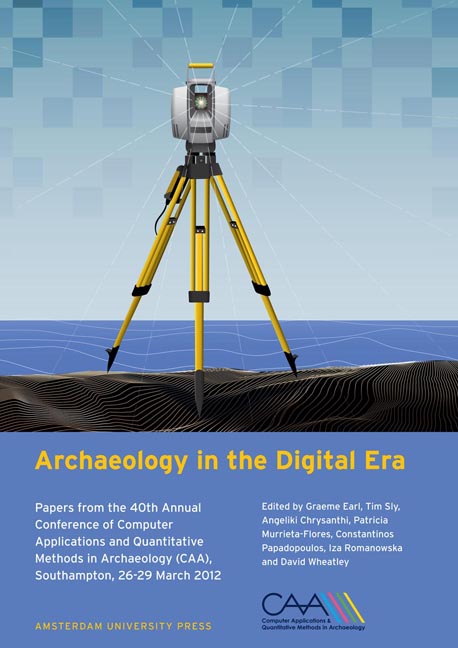 Archaeology in the Digital Era
Archaeology in the Digital Era IBISA 3D: Image-Based Identification/Search for Archaeology Using a Three- dimensional Coin Model
Published online by Cambridge University Press: 16 February 2021
Summary
Abstract:
The IBISA system was designed to help the user decide, from their images, if two coins are either the same, come from the same die, share resemblance in style, or are completely different. This decision is extremely useful for the study of coin hoards, which can inform us about the original production process, chronology, geography, etc. IBISA uses computer vision methods to get rid of the viewing conditions when searching for similarities in the databases. To cancel rigid transforms (translation, rotation, zoom) inherent to the photography, the system uses a global registration method. The present work gives an overview of the original IBISA system, characterizes the errors in the estimation of the rigid transform by the registration method, as well as the impact of the light conditions. Then the extension of the system to a three-dimensional coin model is presented, yielding a more reliable estimation.
Keywords:
Numismatics, Ancient Coins, Image Registration, Image Similarity, Shape From Shading
Introduction
IBISA (Image-Based Identification/Search for Archaeology) is a software system (Marchand et al. 2009) that manages databases of digital images of archaeological objects, and allows the user to perform searches by examples. The objects are only required to be quasi flat (approximately two- dimensional) and produced from matrices via some striking / stamping / casting process. The original matrices are generally lost now, but many objects with their prints can still be found, with many similarities among them. The IBISA system was originally designed to work with ancient (Greek, Roman) coins. In this numismatic context, the matrix is then a die.
By taking advantage of the relations (die links, style similarities) among large finds (coin hoards), one could determine the original production process, chronology, geography, or even economical or social issues (Bresson 2005). The difficulty is to handle a large number of objects, very similar at first sight for a non-specialist, and to compare them. This task is time-consuming, quite exhausting, and thus error- prone. IBISA was designed to help the user decide, from their images, if two objects are either the same, come from the same matrix, share resemblance in style, or are completely different.
- Type
- Chapter
- Information
- Archaeology in the Digital EraPapers from the 40th Annual Conference of Computer Applications and Quantitative Methods in Archaeology (CAA), Southampton, 26-29 March 2012, pp. 186 - 193Publisher: Amsterdam University PressPrint publication year: 2014
